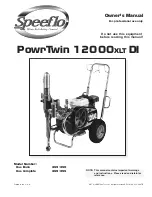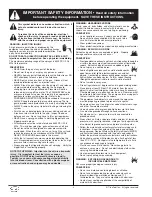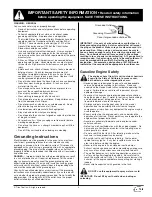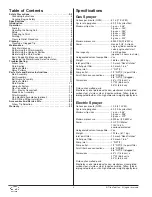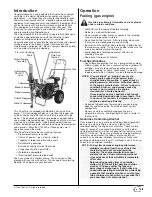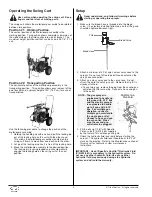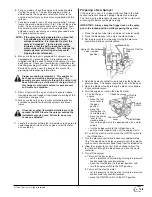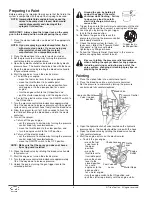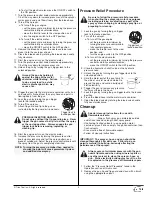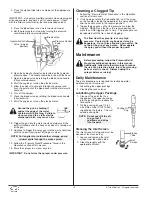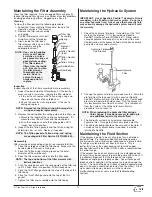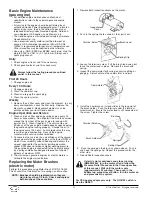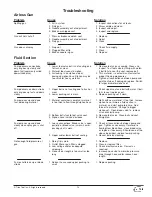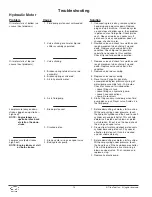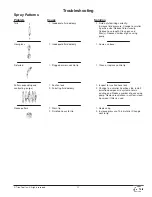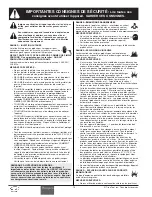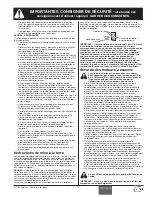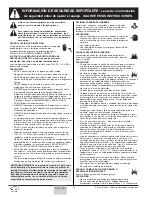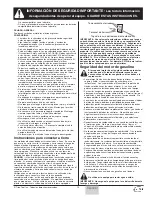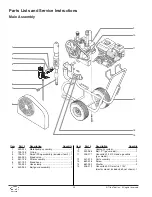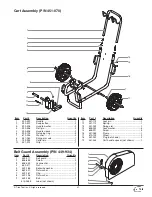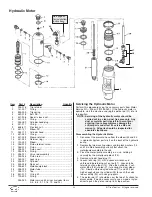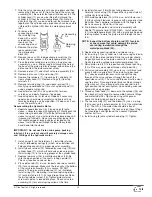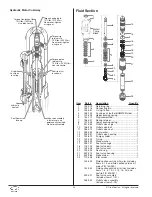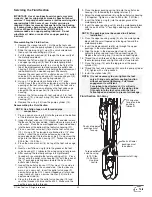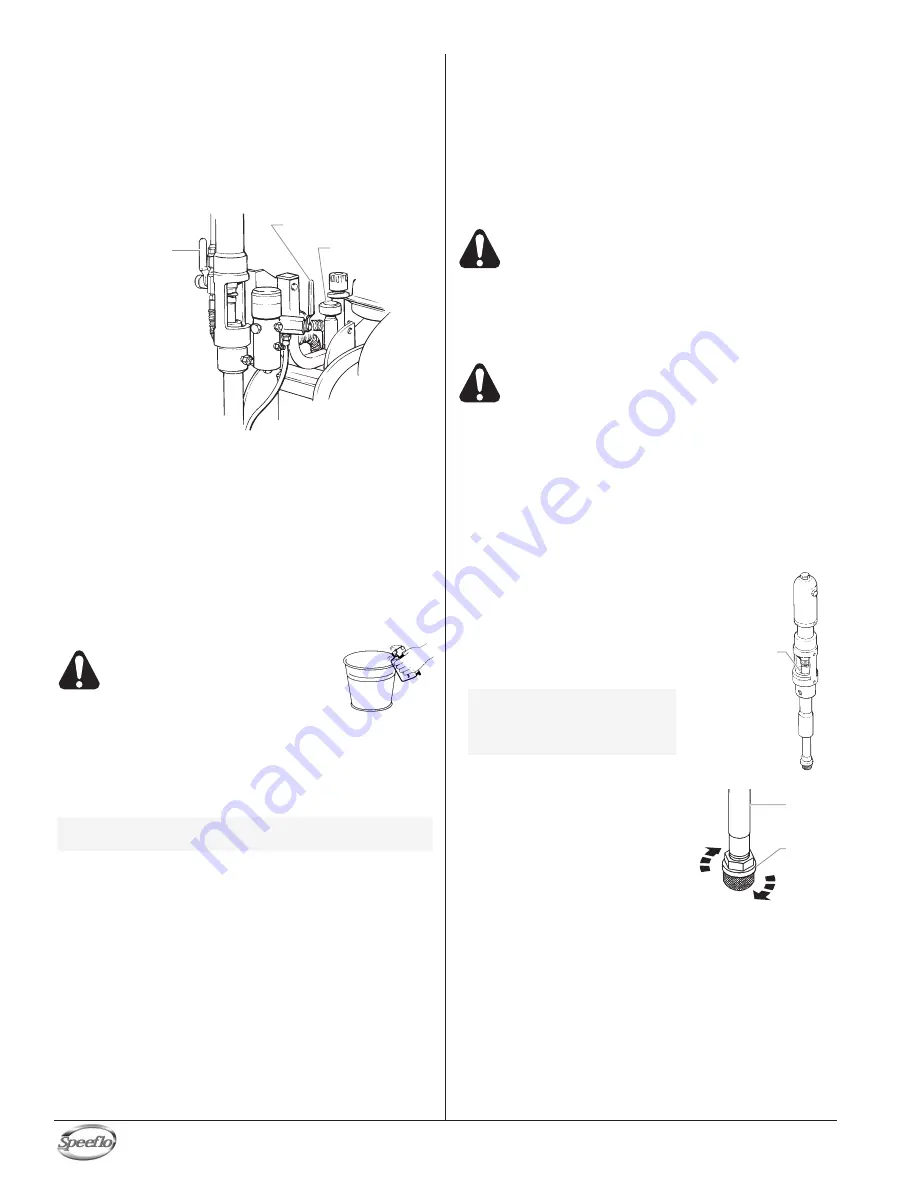
3. Place the siphon tube into a container of the appropriate
solvent.
IMPORTANT: Use only compatible solvents when cleaning out
oil based enamels, lacquers, coal tar, and epoxies. Check
with the fluid manufacturer for the recommended solvent.
4. Place the bleed hose into a metal waste container.
5. Set the pressure to minimum by turning the pressure
control knob fully counterclockwise.
6. Open the hydraulic shut-off valve located on the hydraulic
pressure hose. The handle should be in line with the hose.
7. Open the bleed valve by rotating the bleed valve handle
fully counterclockwise.
8. Start the engine or turn on the electric motor.
9. Allow the solvent to circulate through the sprayer and
flush the paint out of the bleed hose into the metal waste
container.
10. Turn off the sprayer.
11. Close the bleed valve by rotating the bleed valve handle
fully clockwise.
12. Start the engine or turn on the electric motor.
Ground the gun by holding it
against the edge of the metal
container while flushing. Failure to
do so may lead to a static electric
discharge, which may cause a fire.
13. Trigger the gun into the metal waste container until the
paint is flushed out of the hose and solvent is coming out
of the gun.
14. Continue to trigger the spray gun into the waste container
until the solvent coming out of the gun is clean.
15. Follow the “Pressure Relief Procedure” found in the
Operation section of this manual.
16. Store the sprayer in a clean, dry area.
IMPORTANT: Do not store the sprayer under pressure.
NOTE: For long-term or cold weather storage, pump
mineral sprits through the entire system.
Hydraulic Shut-off
Valve (in open
position)
Pressure Control
Knob
Bleed Valve
10
© Titan Tool Inc. All rights reserved.
Cleaning a Clogged Tip
1. Follow the “Pressure Relief Procedure” in the Operation
section of this manual.
2. If the tip clogs, rotate the tip handle 180° until the arrow
on the handle is facing the opposite of the spray direction
and the handle clicks in the reverse position.
3. Trigger the gun once so that the pressure can blow the
clog out. NEVER use the tip in the reverse position for
more than ONE trigger pull at a time. This procedure can
be repeated until the tip is free of clogging.
The flow from the spray tip is at very high
pressure. Contact with any body part may be
dangerous. Do not place finger on gun outlet. Do
not point the gun at any person. Never operate
the spray gun without the proper tip guard.
Maintenance
Before proceeding, follow the Pressure Relief
Procedure outlined previously in this manual.
Additionally, follow all other warnings to reduce
the risk of an injection injury, injury from moving
parts or electric shock. Always unplug the
sprayer before servicing!
Daily Maintenance
Two daily procedures are required for routine operator
maintenance on this sprayer:
1. Lubricating the upper packings.
2. Cleaning the rock catcher.
Lubricating the Upper Packings
1. Clean out the paint that has
seeped past the upper packings
into the packing oil cup above the
fluid section.
2. Fill the packing oil cup 1/2 full
with Piston Lube (P/N 314-480)
supplied by the factory. This will
extend packing life.
Cleaning the Inlet Screen
The inlet screen will clog and must be
cleaned at least once a day.
1. Loosen and remove the inlet
screen from the siphon tube.
2. Clean thoroughly with the
appropriate solvent.
Siphon
Tube
Inlet
Screen
NOTE: Do not over-fill the oil
cup so that it
overflows and drips
into the paint.
Packing Oil
Cup

